“An ounce of prevention is worth a pound of cure.”
Cancer is a much feared disease that seems to be affecting more and more pets, especially older dogs and cats. The more you know about this dreaded disease, the more proactive you can be with prevention.
Note that feline leukemia (FeLV), a very common cat disease, is not the same as leukemia people get; feline leukemia is a cat-contagious viral infection.
Normally cells in the body grow, divide, and then die. By contrast, cancer cells continue to divide and reproduce uncontrollably.  Most of the time, a healthy immune system kills these abnormal cells. But when the cells replicate too quickly, and the immune system can’t keep up, a tumor forms. The tumorous growth affects surrounding organs and can lead to death.
Most of the time, a healthy immune system kills these abnormal cells. But when the cells replicate too quickly, and the immune system can’t keep up, a tumor forms. The tumorous growth affects surrounding organs and can lead to death.
Early detection is one of the best safeguards.
Some Early Signs of Cancer:
 Appetite loss
Appetite loss- Weight loss
- Chronic lameness
- Abnormal lumps
- Cough
- Lethargy
- Abdominal distension
- Bleeding or discharge
- Chronic vomiting or diarrhea
- Offensive odor from any orifice
- Difficulty breathing, defecating, urinating, or eating
- Swollen lymph nodes, most easily detected behind the jaw or knee
Some people classify the increased percentages of cancer in dogs and cats as an epidemic. 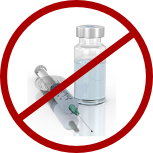 Many veterinarians cite heredity and exposure to carcinogens as the reason for this epidemic, or they say they don’t know the cause. Holistic veterinarians, however, are convinced that the increased rates in cancer stem from inbreeding, commercial pet foods, and regular vaccinations. Poor diet, increased exposure to chemicals and environmental pollutants are also common beliefs.
Many veterinarians cite heredity and exposure to carcinogens as the reason for this epidemic, or they say they don’t know the cause. Holistic veterinarians, however, are convinced that the increased rates in cancer stem from inbreeding, commercial pet foods, and regular vaccinations. Poor diet, increased exposure to chemicals and environmental pollutants are also common beliefs.
Holistic Treatment
Every cancer case is different and must be treated as such. Most times the best plan of attack includes a number of methods used in conjunction with each other. Some holistic veterinarians frown on conventional methods because the side effects are so drastic that they are often thought to be worse than the disease, itself.

A sometimes overlooked factor that holistic veterinarians take into account when deciding on a treatment plan is the personality of the pet owner. Is this person likely to follow through with a regimen of improved diet, herbal or homeopathic dosing, or any other unfamiliar strategy even if the prognosis is exceptional? Will they be compliant if the care is tedious? If the caregiver is not likely to be compliant, then the treatment won’t help. In those cases, in particular, conventional methods are often advocated.
There are also cases where the cancer is too far gone or too widespread. If the dog or cat is in the final stages of a terminal illness, it’s thought to be best to make the animal’s last days on earth as pleasant as possible, and to enjoy your time together as best you can.
Whatever the case may be, these are a few standards:
 Improve the diet with fresh, raw ingredients containing antioxidants, carotenoids, flavonoids, and enzymes.
Improve the diet with fresh, raw ingredients containing antioxidants, carotenoids, flavonoids, and enzymes.- Give extra vitamin C and selenium.
- Use only filtered water.
- Give digestive enzymes to help the body absorb nutrients.
- Use selective herbs which are described further down this page. These herbs have medicinal properties such as blood cleansing, liver supporting, rejuvenating, soothing, immune and lymph system strengthening, and detoxifying. They also act against tumor growth and inflammation.
- Avoid all vaccinations.
- Consult with at least one holistic veterinarian, but preferably two or three, before deciding on a plan. Do not, however, procrastinate. Time is of the essence. You should feel comfortable with the practitioner you choose. You ought to be able to ask him or her about treatments you have researched, and you should be able to understand why this person supports or doesn’t support certain therapies.
If chemotherapy or radiation is prescribed, it’s essential that the body be supported. Natural and herbal supplementations equip your pet to deal with the awful side effects.
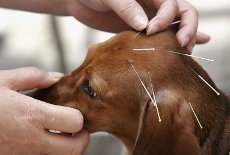 Most holistic veterinarians advocate the use of acupuncture or touch therapy, but the writers of this website are not experienced in this field, so we leave that up to you to research. Our concern is that an inexperienced acupuncturist may stimulate the wrong cells. However, a large number of veterinarians support this treatment.
Most holistic veterinarians advocate the use of acupuncture or touch therapy, but the writers of this website are not experienced in this field, so we leave that up to you to research. Our concern is that an inexperienced acupuncturist may stimulate the wrong cells. However, a large number of veterinarians support this treatment.
Some animals respond well to conventional therapies but the related side effects, long term prognosis, quality of life and other health issues all need to be considered when looking at treatment options. At times, the best course of action includes therapies from a number of disciplines: conventional treatments, nutrition, supplementation, herbal remedies, homeopathy, and unconventional therapies. Consult with a holistic veterinarian.
Conventional Treatments
Most conventional cancer treatments, such as chemotherapy and radiation, are based on the fact that malignant tumors have a higher rate of growth and the drugs work by interfering with the cell’s DNA synthesis or function.  Because healthy cells go through regular division as well, these conventional treatments have an increased incidence of side effects and a limited area of effectiveness and safety.
Because healthy cells go through regular division as well, these conventional treatments have an increased incidence of side effects and a limited area of effectiveness and safety.
 There are new classes of drugs that are being researched to mark the abnormal high dividing cells and therefore destroy only cancer cells.
There are new classes of drugs that are being researched to mark the abnormal high dividing cells and therefore destroy only cancer cells.
Another conventional treatment is removing a tumor through surgery. This can be very effective unless the cancer cells have spread to a new area.
Nutrition
Good nutrition is the foundation for building a strong immune system. Most commercial pet foods are too high in carbohydrates because carbohydrate sources are cheaper than meat and are often used as fillers. Cancer cells use carbohydrates as their main energy source, so not only does the commercial food leave your pet in poorer health, but it also feeds cancer cells. See the section on natural diet.
 Make sure your pet gets ample antioxidants:
Make sure your pet gets ample antioxidants:
- Vitamin C
- Strengthens resistance against invading organisms
- Possibly reduces chemically induced cancers
- Boosts immune system
- Selenium
- Inhibits tumor growth
- Reduces the toxicity of chemotherapy drugs
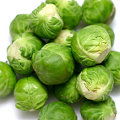 Strengthens immune system
Strengthens immune system
- Vitamins A and E and B complex
- Works with other antioxidants to block chemical reactions that create free radicals
- Milk thistle
- Removes toxins at the cellular level
- Fights free radicals
- Restores and supports the liver
Your pet will derive the highest benefit from these antioxidants if they come from natural, raw, organic sources. When your pet’s immune system is doing everything it can to fight off disease, you don’t want it to have to be fighting against contaminants in food sources and pollutants in the environment. That’s like Germany trying to fight France on one side and Russia on the other.
You also want the nutrients to be absorbed into the body. Wheat grass, leafy greens, broccoli, 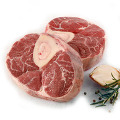 and carrots are all wonderful additions to a raw meat diet. Your cat or dog can’t process these foods without some help from you, though. Either mince them finely or run them through a food processor. Raw meaty bones, seaweeds from unpolluted ocean water, and fresh egg yolks balance out the rest of the diet, and should provide your pet with the essentials. To help with absorption, give digestive enzymes. Also, raw yogurt or kefir is beneficial.
and carrots are all wonderful additions to a raw meat diet. Your cat or dog can’t process these foods without some help from you, though. Either mince them finely or run them through a food processor. Raw meaty bones, seaweeds from unpolluted ocean water, and fresh egg yolks balance out the rest of the diet, and should provide your pet with the essentials. To help with absorption, give digestive enzymes. Also, raw yogurt or kefir is beneficial.
Supplements and Herbs
Supplements and herbs are also important for whole body support. Often during chemotherapy or radiation therapy, side effects cause loss of appetite and lethargy. When white blood cell counts are down, immune supplements can help pets recover from treatment faster and with more energy.
Some herbs have been proven to stimulate specific immune cells in the body that attack and destroy cancer cells. These include:
 Astragalus
Astragalus- Ashwagandha
- Reishi mushrooms
- Mistletoe
- Cat’s claw
- Sheep sorrel
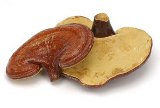 These strengthen the immune system:
These strengthen the immune system:
- Astragalus
- Echinacea
- Reishi mushrooms
- Mistletoe
These support the lymphatic system:
- Echinacea
- Milk Thistle
 These are known as blood-cleansers:
These are known as blood-cleansers:
- Burdock root
- Dandelion root and leaves
- Red clover
- Oregon grape root
- Stinging nettle
- Yellow dock root
- Sheep sorrel
These help soothe nerves:
- Chamomile
- Valerian
And these are potent detoxifiers and nutrient suppliers:
- Buckwheat lettuce
- Wheat grass
- Rye grass
- Barley grass
- Alfalfa
- Spirulina
- Chlorella
- Sheep sorrel
And milk thistle is applicable in all cases of illness because it has been proven time and time again to support and restore the liver, which is probably the most overworked organ in a sick animal.
Homeopathy
Holistic veterinarians well trained in homeopathy often believe that homeopathic treatments work better than conventional cancer treatments.
In CJ Puotinen’s book, The Encyclopedia of Natural Pet Care, veterinary homeopath Larry Bernstein is quoted:
If you are considering using homeopathy, see an expert immediately. Homeopathy has a much higher success rate when radiation and chemotherapy have not been used. It may, however, work well as an adjunct to surgery, if necessary.
 Every case is unique. The animals are all different, the owners are different, and the types of cancer are different. Seek professional help before treating your pet homeopathically.
Every case is unique. The animals are all different, the owners are different, and the types of cancer are different. Seek professional help before treating your pet homeopathically.
At the onset of any cancer, though, you can give Thuya (Thuja) occidentalis 30C. This treatment counteracts the stimulating effect that vaccinations have on tumor growth.
Unconventional Therapies
As with homeopathy, each of the following treatments may only be effective on specific types of cancers. Veterinarians who have experience with these methods gain the knowledge needed to assess which will work best on your particular case. This is one of the reasons why we recommend getting multiple opinions. Experience matters.
Take note that these “unconventional therapies” are all controversial and we recommend doing thorough research before putting too much stock in them. Again, each case is different, and it may be a combination of multiple therapies that will work best for your pet. Probably the best thing you can do is to put a significant amount of effort into finding a very good veterinarian with cancer experience – someone who has studied in extra-curricular fields. Many people do not spend enough time researching their veterinarian, and it can make all the difference between sickness and health, and life and death.
Whatever you do, a good nutrition plan should be included. Raw, fresh, healthy foods are critically important for boosting your pet’s immune system and for allowing the white blood cells to focus their healing abilities on the diseased areas, instead of dealing with issues stemming from lousy food and improper nutrition.
Aloe Vera
 Aloe vera can be used topically on tumors or given internally. Taken internally, studies showed that the polysaccharides in aloe vera stimulate not only the immune system, but also macrophage-activating activities. This means that it helps cells that eat cancer cells. Other studies reported that while the growth of the main tumor didn’t seem affected, aloe juice reduced the mass of the tumor and its ability to metastasize.
Aloe vera can be used topically on tumors or given internally. Taken internally, studies showed that the polysaccharides in aloe vera stimulate not only the immune system, but also macrophage-activating activities. This means that it helps cells that eat cancer cells. Other studies reported that while the growth of the main tumor didn’t seem affected, aloe juice reduced the mass of the tumor and its ability to metastasize.
The juice is also used on chemotherapy patients to safeguard against skin injuries and bolster immune systems because their weakened state makes them prone to infections. In addition, aloe has been known to boost the anti-tumor effectiveness of certain chemotherapy drugs, and it protects the liver and detoxifies.
If taken internally, make sure that the juice is from the inside of the leaves, and doesn’t include any of the bitter rind, as this can be a powerful laxative.
Willard Water
The mixture now known as Willard Water, was used for decades by farmers and race dog owners. Dr. Willard collected their reports on the liquid, and conducted his own research. When his studies showed that Catalyst Altered Water improved the assimilation of nutrients, increased enzyme activity, reduced stress reactions, increased resistance to illness, and reduced infection rates, he patented the discovery as Willard Water.
 Dr. Willard’s water is basically a mixture of sodium silicate, magnesium sulfate, sulfated castor oil, road salt, and powdered lignite. It contains natural antibiotics, germicidals, amino acids, and over fifty trace minerals. Willard Water has been shown to heal burns, cuts, scars, rashes, and it prevents skin injuries in radiation therapy patients. It has been reported to have removed tumors in cows that had cancer, and has been used successfully on a wide range of illnesses.
Dr. Willard’s water is basically a mixture of sodium silicate, magnesium sulfate, sulfated castor oil, road salt, and powdered lignite. It contains natural antibiotics, germicidals, amino acids, and over fifty trace minerals. Willard Water has been shown to heal burns, cuts, scars, rashes, and it prevents skin injuries in radiation therapy patients. It has been reported to have removed tumors in cows that had cancer, and has been used successfully on a wide range of illnesses.
 Dr. Willard and his catalyst altered water were on 60 Minutes in 1980. If you’d like to watch the episode, here’s an image link:
Dr. Willard and his catalyst altered water were on 60 Minutes in 1980. If you’d like to watch the episode, here’s an image link:
Willard Water comes as a concentrate. The normal dilution ratio is one ounce of Willard Water to one gallon of regular, filtered water. For animals undergoing cancer treatment, doubling the strength is recommended for both topical and internal use.
Carnivora
In 1980, Dr. Helmut Keller began studying the medicinal properties of the Venus fly trap plant and found it effective in treating many diseases, including cancer and AIDS. He didn’t get much support in the U.S., so he took his research to Germany. Since then, thousands of patients have been treated with Carnivora, including Ronald Reagan.
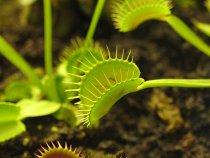 Carnivora is not only a powerful immune system stimulant, it also has been reported to reduce tumor mass with no side effects. Carnivora increases phagocytosis, which is the engulfing and destruction of particular matter. Phagocytes are cells designed, basically, to eat the bad guys. In some cases, the patients being tested went into total remission. While Carnivora has been proven to shrink tumors, it doesn’t do anything for leukemia. And, like most alternative therapies, Carnivora has a higher success rate when chemo and radiation therapies have not yet been used.
Carnivora is not only a powerful immune system stimulant, it also has been reported to reduce tumor mass with no side effects. Carnivora increases phagocytosis, which is the engulfing and destruction of particular matter. Phagocytes are cells designed, basically, to eat the bad guys. In some cases, the patients being tested went into total remission. While Carnivora has been proven to shrink tumors, it doesn’t do anything for leukemia. And, like most alternative therapies, Carnivora has a higher success rate when chemo and radiation therapies have not yet been used.
Natural Health reported on Carnivora in the 1990’s after one of their medical journalists flew to Germany and reported on Keller’s research. Not long after, they published a letter about a dog with mouth cancer and a dismal prognosis. The dog’s owners contacted Keller in Germany. Their dog was saved.
Carnivora doesn’t work on all types of cancer, though. In The Encyclopedia of Natural Pet Care, Puotinen quotes veterinarian Allen Schoen, an experienced user of Carnivora, as saying, “I found it to be most effective in the treatment of carcinomas and mast cell tumors, but I haven’t found it to be very effective on sarcomas or on tumors that are so far advanced that they have metastasized and spread to other parts of the body. If it’s a large but treatable tumor, I may suggest that it be surgically removed first.”  He says his success rate with Carnivora is about sixty percent, but this is with cases he chooses carefully. He’s had the most success with oral squamous cell carcinomas that haven’t metastasized in animals who haven’t received chemo or radiation therapy.
He says his success rate with Carnivora is about sixty percent, but this is with cases he chooses carefully. He’s had the most success with oral squamous cell carcinomas that haven’t metastasized in animals who haven’t received chemo or radiation therapy.
For more information, click the Erlenmeyer flask on the right as a link to one doctor’s research on Carnivora.
Chaparral
This desert shrub has been used in the South Pacific and by Native American healers for centuries. Recently it became popular in the fight against cancer, partly on the premise that it helps to remove carcinogenic toxins from the liver and pancreas.
 Clinical success rates, however, have not been high. It’s therefore recommended that you don’t make chaparral your primary treatment. It’s often used in medicinal teas. The active compound in chaparral is nor-dihydroguaiaretic acid (NDGA), which has been reported to inhibit the electron transport system that supplies tumors with the electrical energy they need to survive.
Clinical success rates, however, have not been high. It’s therefore recommended that you don’t make chaparral your primary treatment. It’s often used in medicinal teas. The active compound in chaparral is nor-dihydroguaiaretic acid (NDGA), which has been reported to inhibit the electron transport system that supplies tumors with the electrical energy they need to survive.
Essiac Tea
There are now numerous variations of this cancer fighter, but the basic tea is comprised of four herbs. Sheep Sorrel and Burdock Root are reported to be the most effective ingredients in the tea. The other herbs boost the immune system, detoxify, soothe, and cleanse. The tea is said to protect vital organs such as the liver and kidney, enabling them to better assist the body in fighting cancer. If you buy Essiac Tea, make sure that the herbs are high quality because different companies market different products.
 Essiac is the backward spelling of the nurse who spent her life researching its cancer fighting properties. Rene Caisse first became interested in the herbal blend when she questioned a patient about how her breast had healed from a malignant tumor. From there, Caisse spent fifty years researching this tea, which is said to have cured many patients with no side effects.
Essiac is the backward spelling of the nurse who spent her life researching its cancer fighting properties. Rene Caisse first became interested in the herbal blend when she questioned a patient about how her breast had healed from a malignant tumor. From there, Caisse spent fifty years researching this tea, which is said to have cured many patients with no side effects.
This treatment, however, is thought to be only effective on newly diagnosed patients with slow growing cancer that hasn’t metastasized. Essiac Tea is generally used as a support therapy, and is not recommended for pets who have kidney ailments because it contains oxalic acid.
Hoxsey Therapy
As with many researchers, the story of Harry Hoxsey is an interesting one. He used a remedy that had been passed down from his great-grandfather to purportedly cure numerous cancer patients. In the 1930’s and ‘40’s “Hoxsey Therapy” was a household phrase. By the 1950s, the Hoxsey Cancer Clinic was the world’s largest private cancer center, with branches in seventeen states.
 Hoxsey continuously battled resistance and hostility from professional medical organizations. Yet two federal courts once upheld the “therapeutic value” of Hoxsey’s tonic. And, at one time, the American Medical Association and the Food and Drug Administration reluctantly admitted that his treatment could cure some forms of cancer. A federal court judge ruled that the efficacy of Hoxsey’s therapy was “comparable to surgery, radium, and x-ray.”
Hoxsey continuously battled resistance and hostility from professional medical organizations. Yet two federal courts once upheld the “therapeutic value” of Hoxsey’s tonic. And, at one time, the American Medical Association and the Food and Drug Administration reluctantly admitted that his treatment could cure some forms of cancer. A federal court judge ruled that the efficacy of Hoxsey’s therapy was “comparable to surgery, radium, and x-ray.”
Eventually, though, Hoxsey’s clinics were shut down by government agencies. They say there is no evidence that Hoxsey Therapy works. Hoxsey then persuaded his nurse to move to Mexico and open the Bio-Medical Center, where treatments are still being conducted today.
There are now a number of variations of Hoxsey Therapy, but most contain compounds with anticancer properties such as buckthorn bark, burdock seed, red clover blossom, licorice root, stillingia root, Oregon grape root, poke root, wild indigo root, prickly ash bark, and potassium iodide. These substances contain compounds that are known to have anticancer, blood cleansing, lymph supporting, immune boosting, and/or nutrition enhancing properties.
Hoxsey’s tonic is taken internally in drop form, but there is also a salve that can be applied externally. We don’t advise using this treatment or giving the ingredients to your pet without consulting a holistic veterinarian. If used incorrectly, some of the ingredients, such as poke root, could be toxic to your pets.
Hsiao Chai Hu Tang
This herbal is also known in China as xiao chai hu tang, in Japan as Sho-saiko-to, and in the west as Minor Bupleurum. The “bupleurum” comes from its main ingredient, Hare’s Ear Root, otherwise known as Bupleuri chinense. Hsiao chai hu tang is also comprised of skullcap root, ginger root, Half summer, jujube fruit, ginseng root, and licorice root.
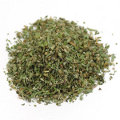 In a 1995 edition of Alternatives, Dr. David Williams stated that hsiao chai hu tang may be the “best medicine available in the treatment of primary liver cancer.” It’s also known to be beneficial in all types of liver disease. While reports from Japan showed Hsiao chai hu tang inhibited the growth of precancerous breast tissue cells, it’s most commonly recommended for liver cancer, and is sometimes thought to be best alternated with milk thistle, an herb known to rejuvenate the liver.
In a 1995 edition of Alternatives, Dr. David Williams stated that hsiao chai hu tang may be the “best medicine available in the treatment of primary liver cancer.” It’s also known to be beneficial in all types of liver disease. While reports from Japan showed Hsiao chai hu tang inhibited the growth of precancerous breast tissue cells, it’s most commonly recommended for liver cancer, and is sometimes thought to be best alternated with milk thistle, an herb known to rejuvenate the liver.
Cancer Fighting Foods
Much research has been done on cancer preventing and cancer fighting foods. It’s a hot topic right now in human cancer prevention and treatment, and your pet can eat almost all of the same foods you can. See Forbidden Foods for the exceptions.
 Dr. William Li is a cancer prevention expert who focusses on cancer fighting foods and a process called angiogenesis. Click the image of the Erlenmeyerflask to watch one of his informative and enlightening speeches.
Dr. William Li is a cancer prevention expert who focusses on cancer fighting foods and a process called angiogenesis. Click the image of the Erlenmeyerflask to watch one of his informative and enlightening speeches.
Nutrition has already been discussed above, but we’ll recap the highlights. When your pet is fighting a disease, it’s important to feed fresh, raw, organic foods. Your sick dog or cat doesn’t need to be fighting toxicities in their food as well as the disease.
And make sure the animal receives a full array of nutrients, including antioxidants, enzymes, carotenoids, and bioflavonoids. The last two are found in green and orange fruits and vegetables. There was a documented case where a woman cured her Dalmatian of intestinal cancer by feeding large amounts of carrot juice. Beets and celery are also good.
Chlorophylls, found in dark green plants, help protect against cancer causing agents.  Broccoli, both the florets and the stalks, are an excellent source of chlorophyll and antioxidants. So are kale, dark green lettuce, and asparagus. Mince or mash these products in a juicer or food processor, because your pet’s body isn’t designed to digest them well.
Broccoli, both the florets and the stalks, are an excellent source of chlorophyll and antioxidants. So are kale, dark green lettuce, and asparagus. Mince or mash these products in a juicer or food processor, because your pet’s body isn’t designed to digest them well.
You’ve probably noticed your dog or cat eating grass from time to time. Make sure your pet is not grazing on grass that has been sprayed with pesticides! If the grass, however, is organic, it’s a great source of chlorophyll, and may also contain helpful vitamins and enzymes. Most grasses act as intestinal cleansers, as the cellulose brushes its way out of your pet’s digestive tract.
If your dog or cat likes to eat grass, there are some beneficial grasses that you can grow yourself, providing your pet with a safe buffet to munch on. These include:
Click on the wheat grass image if you want tips on how to grow it.
Be aware, though, that until your pet’s system is accustomed to eating grass, as was the systems of their ancestors, or if they eat too much of it, they will probably throw up. Therefore, if you choose to cultivate grass for your dog or cat, start them off by feeding only very small portions, and graduate them accordingly.
 While we’re on the subject, make sure your garden is free of plants that are toxic to your pet. Daffodils, lilies of the valley, yews, laurels, laburnum, azaleas, foxglove, philodendrons and rhubarb leaves can be dangerous. Most varieties of lily, in particular, are especially poisonous to cats, although in some cases it’s the bulb, not the rest of the plant. Asparagus ferns are nontoxic, but their berries can cause stomach upset.
While we’re on the subject, make sure your garden is free of plants that are toxic to your pet. Daffodils, lilies of the valley, yews, laurels, laburnum, azaleas, foxglove, philodendrons and rhubarb leaves can be dangerous. Most varieties of lily, in particular, are especially poisonous to cats, although in some cases it’s the bulb, not the rest of the plant. Asparagus ferns are nontoxic, but their berries can cause stomach upset.
Fermented foods are also a hot topic right now. Many doctors and researchers support the theory that lactic acid fermented vegetables strengthen our immune and digestive systems. Dr. Johannes Kuhl, author of Cancer in Check, considers these lactic acid cultured vegetables to be “hostile” to cancer. And in his book, How to Fight Cancer and Win, William Fischer describes the importance of sauerkraut and other lactic acid fermented foods as a support therapy in human cancer prevention and treatment.
This doesn’t mean feed your pet a jar of pickles. The experts are referring to fresh, raw, unpasteurized natural vegetables, pickled without vinegar and with a minimal amount of salt.  Fischer promotes these raw cultured vegetables as a first-rate bowel tonic. The lactic acid supports beneficial intestinal flora while helping to eradicate harmful bacteria.
Fischer promotes these raw cultured vegetables as a first-rate bowel tonic. The lactic acid supports beneficial intestinal flora while helping to eradicate harmful bacteria.
Click on the cabbage for a link to instructions on how to make lactic acid fermented vegetables.
Immuno-Augmentative Therapy
Immuno-augmentative therapy (IAT) consists of injections of extracted components of blood that are known to attack cancer. The protein mixture contains antitumor antibodies and “deblocking” proteins.
The technical information is too lengthy to explain on this website, but Pat Lazarus does an excellent job of explaining how IAT works in his book, Keep Your Dog Healthy the Natural Way.
While the American Cancer Society and other mainstream organizations remain skeptical about this treatment’s efficacy, Drs. Marty and Robert Goldstein swear by it. Since 1998, they’ve been treating dogs and cats with this therapy, which was previously used only on humans. The doctors Goldstein are quoted as having a fifty to sixty percent success rate for animals in the early terminal stage.
Here’s an excerpt from Lazarus’s book:
As I was finishing my editing on this section, I happened into the living room where my husband, Joe, was watching television. On the screen were a dog, a woman, and Dr. Marty Goldstein. “Oh,” I said, “That’s Marty!” Then my attention went to the dog, a beautiful animal whose sprightliness was infectious. Entranced, I watched the dog amusing himself while his owner and Dr. Goldstein talked to the host. “Why is the dog on the show?” I eventually asked.“Snoopy’s there,” said Joe, “because he had terminal spinal cancer some years ago.”
 Vitamin C
Vitamin C
Linus Pauling popularized high-dose vitamin C as a cancer therapy, and there are other practitioners who support the method. High-dose vitamin C is not a primary course of treatment, however, and only serves as an adjunct to improved immune function and overall nutrition. High-dose vitamin C taken intravenously is a method being researched currently.
In his book, Natural Health for Dogs and Cats, Dr. Richard Pitcairn recommends giving one gram of vitamin C for every fifteen pounds of body weight. That’s about 667 mg per ten pounds.
Parasitic Theory
There have been a few doctor-researchers over the years who have believed that cancer is caused by parasites. Dr. Livingston-Wheeler and Dr. Regehr Clark are examples.
As far as we know, these therapies have only been used on humans. However, there are veterinary practitioners who use some of the herbal remedies as support therapy for pets being treated with cancer.
Dr. Clark explains that adult parasites live in the colon. Their eggs are either excreted out of the body, where they hatch outside of us, or, if eggs remain in the bloodstream, the liver usually takes care of them. If, however, the liver is unhealthy or exposed to certain toxins,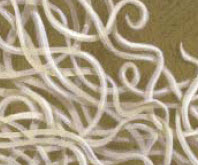 it can fail in its parasite-killing mission. When this happens, the escaped young parasites circulate through the body, and they emit a growth hormone called
it can fail in its parasite-killing mission. When this happens, the escaped young parasites circulate through the body, and they emit a growth hormone called
ortho-phospho-tyrosine. The presence of this growth hormone is an indicator used in common tests for cancer.
The growth hormone emitted by the young parasites attaches to and penetrates cells within the body, which begin dividing and growing, creating a cancerous tumor. Clark believes that many diseases are caused by parasites. There has been controversy over her work, and that of similar doctors, but her treatment is inexpensive and may be a simple way to rid your pet’s body of internal parasites.
For more information, you can read her book, The Cure for All Cancers, or visit her website.
Other Methods
There are other alternative or unconventional cancer treatments, such as:
- Quercetin
- Medicinal mushrooms
- Nanobees
- Coley’s toxins
- Budwig diet
- Sodium bicarbonate
- Gonzalez regimen
- Proteolytic enzyme
- Laetrile
- Di Bella Multitherapy
- 714X
- Protocel and Cancell
- Hydrazine sulfate
- Krebiozen
- Antineoplastons
- Emanuel Revici’s catabolic/anabolic
Some of these are under investigation, and some are said to be disproven. Incidentally, all of the methods in this Unconventional Therapies section are considered disproven by professional medical organizations.
Final Note
It may be wise to consider Dr. Pitcairn’s words in Natural Health for Dogs and Cats. He reminds us that helpful cancer treatments have three possible outcomes: eradicating the tumors, extending your pet’s life beyond the initial prognosis, or simply maintaining the highest quality of life in the time remaining. He states that most of his cases fall in the latter two groups because the pets who have been brought to him with cancer are usually old and in poor health.
About a third of his cases, however, go into remission. This group is usually comprised of the healthy, younger animals who have not undergone chemo or radiation therapy.
Pitcairn writes:
Though chemotherapy, radiation, and surgery can have dramatic and rapid results, the quality of life for the animals afterwards does not impress me. Life is more than just physical duration. To me, it is not enough for the patient to be alive – there must also be pleasure in that life. From the beginning of my career in veterinary medicine, I have been averse to the harsh treatments used for cancer. It just doesn’t feel right to me.
Further, I don’t think that conventional treatment is effective in prolonging life. […] Considering the discomfort entailed in conventional treatment, I don’t think it is worth it.
With these quotes in mind, you know the approximate odds that your pet will recover from cancer.  You will hear many stories of cancer survivors, and we believe in the beneficial impact these stories have on our morale. We believe that it’s good to approach treatment with a realistic foundation, but an optimistic attitude. We believe in the power of positive thinking, prayer, visualization … and love.
You will hear many stories of cancer survivors, and we believe in the beneficial impact these stories have on our morale. We believe that it’s good to approach treatment with a realistic foundation, but an optimistic attitude. We believe in the power of positive thinking, prayer, visualization … and love.